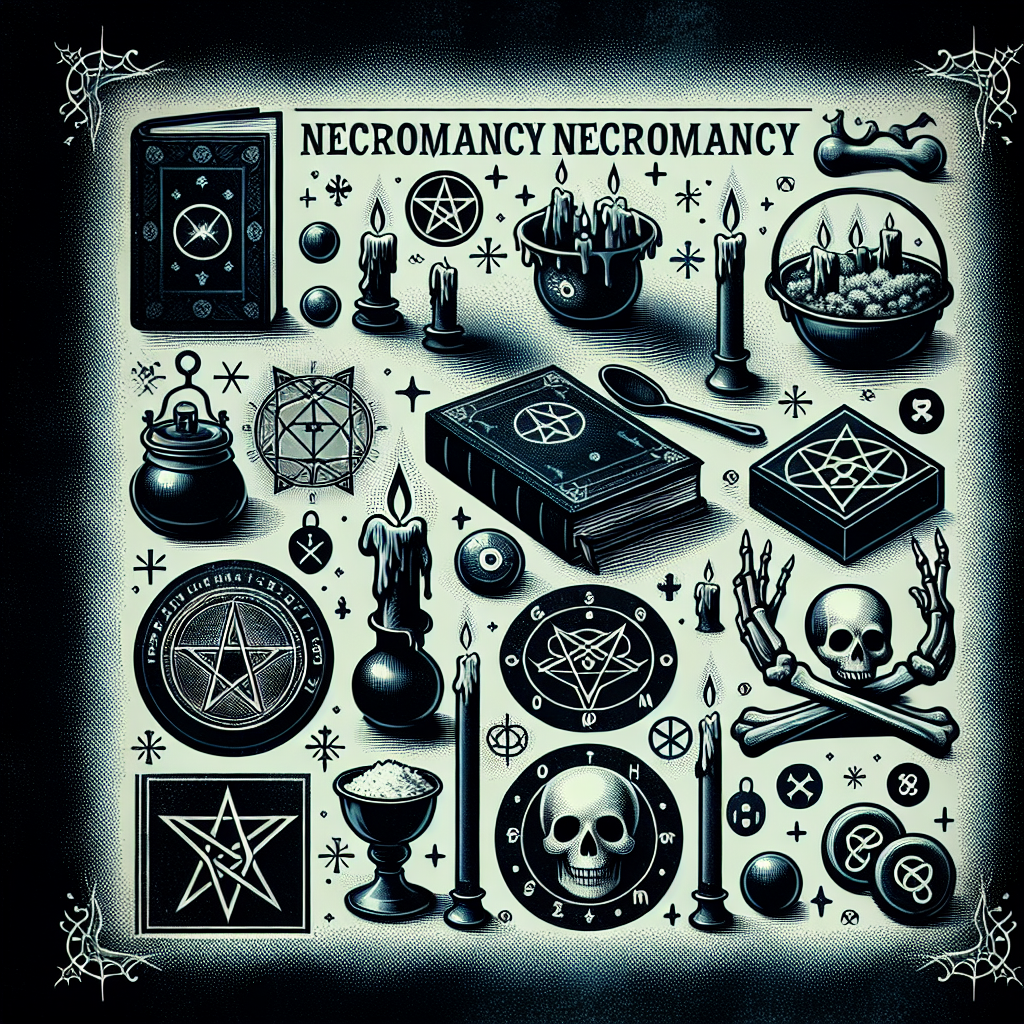Your cart is currently empty!
Tag: Dangers

The Hidden Dangers of Data Center Downtime and How to Protect Your Business
Data center downtime can be a nightmare for businesses, causing significant financial losses, damage to reputation, and even legal implications. With the increasing reliance on data centers for storing and processing critical business information, it is crucial for companies to be aware of the hidden dangers of downtime and take proactive steps to protect their business.One of the biggest risks associated with data center downtime is the loss of revenue. Businesses rely on their data centers to process transactions, communicate with customers, and manage operations. When a data center goes down, it can disrupt these essential functions, resulting in lost sales and revenue. In fact, according to a report by the Ponemon Institute, the average cost of data center downtime is over $740,000 per incident.
Another danger of data center downtime is damage to reputation. In today’s digital age, customers expect businesses to be available 24/7. If a company’s website or online services are unavailable due to data center downtime, it can lead to frustrated customers and negative reviews. This can damage a company’s reputation and lead to a loss of trust and loyalty from customers.
Data center downtime can also have legal implications for businesses. Depending on the industry, companies may be required to meet certain compliance standards for data security and availability. If a data center downtime incident results in a breach of data or failure to meet compliance standards, it can lead to legal repercussions, fines, and lawsuits.
So, how can businesses protect themselves from the hidden dangers of data center downtime? Here are some key strategies to consider:
1. Implement a robust backup and disaster recovery plan: Businesses should have a comprehensive backup and disaster recovery plan in place to ensure that critical data is protected and can be quickly restored in the event of a data center outage.
2. Invest in redundant infrastructure: To minimize the risk of downtime, businesses should invest in redundant infrastructure, such as backup power supplies, cooling systems, and network connections. This can help ensure that operations can continue even if one component fails.
3. Monitor and maintain systems regularly: Regular monitoring and maintenance of data center systems can help identify potential issues before they lead to downtime. Businesses should regularly check for hardware failures, software glitches, and security vulnerabilities to proactively address any issues.
4. Train staff on best practices: Employees play a crucial role in preventing data center downtime. Businesses should provide training on best practices for data center management, security protocols, and disaster response to ensure that staff are prepared to handle any potential issues.
In conclusion, data center downtime poses significant risks to businesses, including financial losses, damage to reputation, and legal implications. By understanding the hidden dangers of downtime and implementing proactive measures to protect their business, companies can minimize the impact of data center outages and ensure the continuity of their operations.

The Hidden Dangers of Data Center Downtime and How to Avoid Them
Data centers play a crucial role in today’s digital world, serving as the backbone of the internet and housing the infrastructure that powers our online activities. However, despite their importance, data centers are not immune to downtime, which can have serious consequences for businesses and individuals alike. In this article, we will explore the hidden dangers of data center downtime and provide tips on how to avoid them.The Hidden Dangers of Data Center Downtime
Data center downtime refers to the period of time during which a data center is not operational. This can be caused by a variety of factors, including power outages, equipment failures, and natural disasters. While downtime may seem like a minor inconvenience, the reality is that it can have far-reaching consequences, both for businesses and individuals.
One of the most obvious dangers of data center downtime is the loss of revenue. For businesses that rely on data centers to power their operations, even a few hours of downtime can result in significant financial losses. In fact, according to a report by the Ponemon Institute, the average cost of data center downtime is $9,000 per minute. This can quickly add up to millions of dollars in lost revenue for larger organizations.
In addition to financial losses, data center downtime can also damage a company’s reputation. In today’s hyper-connected world, customers expect businesses to be available 24/7. If a company’s website or online services are down for an extended period of time, customers may lose trust in the business and take their business elsewhere. This can have long-term implications for a company’s bottom line and brand reputation.
Furthermore, data center downtime can also result in data loss. When a data center goes down, there is a risk of losing important data and information stored on servers. This can have serious consequences for businesses, particularly if the lost data is sensitive or confidential. In some cases, data loss can even lead to legal and regulatory penalties, as companies are required to protect their data in accordance with privacy laws.
How to Avoid Data Center Downtime
While data center downtime is a common occurrence, there are steps that businesses can take to minimize the risk and avoid the hidden dangers associated with it. Here are some tips to help prevent data center downtime:
1. Regular Maintenance: Regular maintenance of data center equipment is essential to prevent downtime. This includes conducting routine inspections, testing backup systems, and replacing old or faulty equipment.
2. Redundancy: Implementing redundancy in data center infrastructure can help minimize the impact of downtime. This includes having backup power sources, redundant cooling systems, and duplicate server hardware.
3. Disaster Recovery Plan: Having a disaster recovery plan in place is crucial for minimizing the impact of data center downtime. This plan should outline the steps to take in the event of a data center outage, including how to restore services and recover lost data.
4. Monitoring and Alerts: Implementing a monitoring system that can alert IT staff to potential issues in real-time can help prevent downtime before it occurs. This can include monitoring temperature levels, power usage, and network traffic.
In conclusion, data center downtime can have serious consequences for businesses and individuals alike. By understanding the hidden dangers of downtime and taking proactive measures to prevent it, businesses can minimize the risk and ensure the uninterrupted operation of their data centers. Implementing regular maintenance, redundancy, disaster recovery plans, and monitoring systems can help businesses avoid the hidden dangers of data center downtime and protect their operations and reputation.

The Dangers and Pitfalls of Necromancy
Necromancy, the practice of communicating with the dead, has long been a subject of fascination and fear. While some see it as a way to gain insight and wisdom from beyond the grave, others view it as a dangerous and forbidden practice. The dangers and pitfalls of necromancy are numerous and should not be taken lightly.One of the main dangers of necromancy is the potential for spiritual harm. By attempting to communicate with the dead, practitioners open themselves up to negative energies and entities that can cause harm to their own spiritual well-being. These entities can latch onto the practitioner and cause a range of physical, emotional, and psychological issues.
Furthermore, necromancy can also lead to a loss of control over one’s own life. By seeking guidance and advice from the dead, practitioners may become dependent on these spirits for decision-making, leading to a lack of personal agency and autonomy. This can result in a loss of self-identity and the ability to make choices for oneself.
Another danger of necromancy is the risk of attracting malevolent spirits. The dead are not always benevolent or helpful, and practitioners may inadvertently summon spirits that are hostile or malicious. These entities can cause harm to the practitioner and those around them, leading to a range of negative consequences.
Additionally, necromancy can also have physical repercussions. The act of communicating with the dead can be physically draining, leading to fatigue, illness, and even death in extreme cases. The practice can also disrupt the natural balance of energies in the body, leading to a range of physical ailments and imbalances.
In conclusion, while necromancy may hold a certain allure and mystique, it is a dangerous and potentially harmful practice. Practitioners should approach it with caution and respect, and be aware of the potential dangers and pitfalls involved. It is important to remember that communication with the dead is not to be taken lightly, and should only be attempted by those who are well-versed in the risks and consequences.

The Dangers and Consequences of Practicing Necromancy
Necromancy, the practice of communicating with the dead, has long been a subject of fascination and fear. While some may view it as a harmless form of spiritual exploration, the reality is that practicing necromancy can have dangerous and far-reaching consequences.One of the most obvious dangers of necromancy is the potential for negative spiritual entities to enter into the practitioner’s life. By opening the door to communication with the dead, individuals may inadvertently invite in malevolent spirits that can wreak havoc on their lives. These entities can cause physical, emotional, and psychological harm, leading to a host of negative consequences.
Furthermore, necromancy can also have serious repercussions on the practitioner’s mental health. Engaging in rituals and practices that involve communicating with the dead can lead to feelings of isolation, paranoia, and disconnection from reality. Over time, this can result in the deterioration of the individual’s mental well-being and overall sense of self.
In addition to the spiritual and mental dangers of necromancy, there are also legal and ethical considerations to take into account. In many cultures and societies, the practice of necromancy is considered taboo and even illegal. Engaging in necromantic activities can result in legal consequences, including fines, imprisonment, and social ostracization.
Furthermore, from an ethical standpoint, necromancy raises questions about consent and respect for the dead. Communicating with spirits without their explicit permission can be seen as a violation of their autonomy and can lead to karmic consequences for the practitioner.
Ultimately, the dangers and consequences of practicing necromancy are real and should not be taken lightly. Individuals who are drawn to this dark art should proceed with caution and seek guidance from experienced practitioners or spiritual advisors. It is important to understand the potential risks involved and to approach necromancy with the utmost respect and reverence for the spiritual realm.

The Dark Side of Necromancy: Dangers and Precautions
Necromancy, the practice of communicating with the dead, has long been a source of fascination and fear in many cultures. While some may view it as a harmless form of spiritual communication, there is a darker side to necromancy that should not be ignored.One of the biggest dangers of necromancy is the potential for negative entities or spirits to be summoned during a ritual. These entities can be malevolent and may seek to cause harm to the practitioner or those around them. Without proper precautions and protections in place, the practitioner may find themselves in a dangerous and potentially life-threatening situation.
Another danger of necromancy is the potential for psychological harm. Engaging in communication with the dead can be a traumatic experience, especially if the practitioner is not mentally prepared for what they may encounter. This can lead to feelings of fear, anxiety, and even paranoia.
Furthermore, necromancy can also have negative consequences on the physical health of the practitioner. Engaging in rituals that involve blood or other bodily fluids can put the practitioner at risk of contracting diseases or infections. Additionally, the mental and emotional toll of practicing necromancy can manifest in physical symptoms such as fatigue, insomnia, and headaches.
To protect oneself from the dangers of necromancy, it is important to take precautions before engaging in any rituals. This includes creating a protective circle, using charms or talismans for protection, and performing regular cleansing rituals to rid oneself of any negative energies.
It is also important to approach necromancy with respect and caution. This means being mindful of the potential consequences of one’s actions and seeking guidance from experienced practitioners or spiritual leaders.
In conclusion, while necromancy can be a powerful tool for spiritual communication, it is not without its dangers. Practitioners should take precautions to protect themselves from negative entities, psychological harm, and physical consequences. By approaching necromancy with respect and caution, practitioners can mitigate the risks and ensure a safe and fulfilling spiritual experience.

The Dangers of Dabbling in Necromancy: Tales of Hauntings and Curses
Necromancy, the practice of communicating with the dead, has long been considered a dangerous and forbidden art. Tales of hauntings and curses associated with dabbling in necromancy have been passed down through generations, warning of the grave consequences that can result from attempting to meddle with forces beyond our control.One such tale tells of a young sorcerer who, in his arrogance and curiosity, sought to raise the spirits of the deceased to gain forbidden knowledge. In his pursuit of power, he unwittingly unleashed a malevolent force that haunted him for the rest of his days. The once-gifted sorcerer became a tormented soul, forever plagued by the vengeful spirits he had summoned.
Another story tells of a group of friends who, in a misguided attempt to contact a deceased loved one, performed a necromantic ritual without fully understanding the risks involved. They soon found themselves beset by a series of strange and terrifying occurrences, from objects moving on their own to unexplained noises and sightings of ghostly figures. The friends quickly realized that they had opened a door to the spirit world that they were ill-equipped to close, and they paid a heavy price for their reckless actions.
These stories serve as cautionary tales, warning of the dangers of dabbling in necromancy. The spirits of the dead are not to be trifled with, and attempting to manipulate or control them can have grave consequences. Hauntings, curses, and other supernatural phenomena are just a few of the potential risks that can result from meddling with forces beyond our understanding.
It is important to remember that the dead should be allowed to rest in peace, and attempting to disturb their eternal slumber can have dire repercussions. Those who are drawn to the dark arts of necromancy would do well to heed the warnings of these tales and tread carefully when exploring the realm of the dead.
In conclusion, the dangers of dabbling in necromancy are very real, and those who choose to dabble in such practices do so at their own peril. The tales of hauntings and curses that have been passed down through the ages serve as a stark reminder of the consequences that can result from meddling with forces beyond our control. It is best to leave the dead in peace and avoid the temptation to tamper with forces that are best left undisturbed.

The Ethics and Dangers of Communicating with the Dead
Communication with the dead has been a topic of fascination and controversy for centuries. While some believe that it is possible to connect with loved ones who have passed away, others argue that attempting to communicate with the dead is unethical and can be dangerous. In this article, we will explore the ethics and dangers of communicating with the dead.One of the main ethical concerns surrounding communication with the dead is the issue of consent. In many cases, the deceased may not have given permission for their spirits to be contacted or may not be aware that they are being summoned. This raises questions about the privacy and autonomy of the deceased, and whether it is ethical to intrude on their afterlife without their consent.
Additionally, communicating with the dead can also be seen as exploitative, especially if it is done for profit or entertainment purposes. There is a long history of fraudulent mediums and psychics who claim to have the ability to speak with the dead in exchange for money. This can prey on vulnerable individuals who are grieving the loss of a loved one and may be desperate for closure.
Furthermore, there are also dangers associated with attempting to communicate with the dead. Some believe that opening oneself up to the spirit world can leave individuals vulnerable to negative or malevolent entities. This can result in spiritual possession, psychic attacks, or other harmful consequences.
In some cases, communicating with the dead can also lead to psychological harm. Grieving individuals may become obsessed with trying to contact their deceased loved ones, which can prevent them from properly processing their grief and moving on with their lives.
It is important for individuals to approach communication with the dead with caution and skepticism. It is always advisable to consult with a reputable and ethical medium or psychic who has a track record of providing genuine and helpful guidance.
Ultimately, the ethics and dangers of communicating with the dead are complex and multifaceted. While some may find comfort and closure in connecting with their deceased loved ones, it is important to consider the potential consequences and to approach such practices with mindfulness and respect.

The Dark Side of Necromancy: Risks and Dangers to Consider
Necromancy, the practice of communicating with the dead, has long captured the imagination of people throughout history. From ancient cultures using necromancy for divination to modern interpretations in popular media, the idea of harnessing the power of the deceased is both intriguing and terrifying. However, what many may not realize is that necromancy comes with a dark side, filled with risks and dangers that should not be taken lightly.One of the most obvious risks of practicing necromancy is the potential for negative energy and malevolent spirits to be summoned. By delving into the realm of the dead, practitioners open themselves up to dark forces that can have harmful effects on their mental and physical well-being. These entities may attach themselves to the necromancer, causing a range of negative experiences such as nightmares, depression, and even physical illness.
Furthermore, necromancy can also lead to a loss of control over the spirits that are summoned. Once a connection is established with the deceased, it can be difficult to sever that tie, leading to a constant influx of unwanted spirits into the practitioner’s life. This lack of control can result in chaos and turmoil, as the necromancer struggles to maintain boundaries and protect themselves from the spirits’ influence.
In addition to these risks, practicing necromancy can also have serious consequences on one’s spiritual and emotional well-being. The act of communicating with the dead can be emotionally draining and can lead to feelings of guilt, fear, and isolation. Furthermore, the manipulation of the deceased for personal gain or power can have karmic repercussions, leading to a loss of spiritual balance and harmony.
It is important for anyone considering delving into the world of necromancy to carefully consider the risks and dangers involved. It is not a practice to be taken lightly, and should only be pursued by those who are willing to take on the responsibility and consequences that come with it. Seeking guidance from experienced practitioners and spiritual leaders can help mitigate some of the risks associated with necromancy, but ultimately, it is up to the individual to weigh the potential benefits against the potential dangers.
In conclusion, the dark side of necromancy is a sobering reminder of the power and responsibility that comes with communicating with the dead. While the practice may hold a certain allure, it is crucial to approach it with caution and respect for the potential risks and dangers that may arise. By being mindful of these factors, practitioners can navigate the world of necromancy with greater awareness and understanding.

Superintelligence: Paths, Dangers, Strategies
Price: $0.00
(as of Dec 17,2024 13:17:46 UTC – Details)Customers say
Customers find the book thought-provoking and interesting. They describe the subject as frightening and disturbing, yet not alarmist. However, some readers find the pacing boring, repetitive, and lacking a proper narrative. The speculative content is described as thick with concepts and densely written. Opinions vary on readability, with some finding it thorough and comprehensive, while others consider the prose dull or difficult to understand. There are also mixed opinions on the logical content, with some finding it logical and rational, while others find it unconvincing and full of logical fallacies.
AI-generated from the text of customer reviews
Superintelligence: Paths, Dangers, StrategiesIn today’s rapidly advancing technological landscape, the concept of superintelligence – artificial intelligence that surpasses human intelligence in every way – is becoming increasingly relevant and potentially game-changing. As we move closer to the possibility of creating machines that are smarter than us, it is crucial to consider the various paths, dangers, and strategies associated with superintelligence.
One path towards achieving superintelligence is through the development of advanced machine learning algorithms and neural networks. By continuously improving these systems and feeding them vast amounts of data, we may eventually reach a point where AI can outperform humans in a wide range of tasks.
However, this progress also brings with it a number of dangers. One of the most pressing concerns is the potential for superintelligent AI to become uncontrollable or act in ways that are harmful to humanity. Without proper safeguards and ethical guidelines in place, we run the risk of creating a powerful force that could pose a threat to our very existence.
To mitigate these risks, it is essential to develop thoughtful strategies for the responsible development and deployment of superintelligence. This includes establishing clear regulations and standards for AI research, as well as promoting transparency and accountability in the design and implementation of AI systems. Additionally, fostering collaboration between researchers, policymakers, and industry leaders can help ensure that the benefits of superintelligence are maximized while minimizing potential harms.
As we continue to push the boundaries of AI technology, it is imperative that we approach the prospect of superintelligence with caution and foresight. By carefully considering the paths, dangers, and strategies associated with this groundbreaking technology, we can work towards a future where superintelligence enhances our lives rather than threatens them.
#Superintelligence #Paths #Dangers #Strategies


